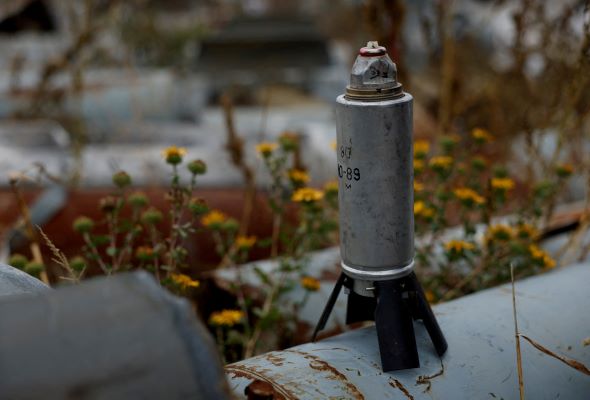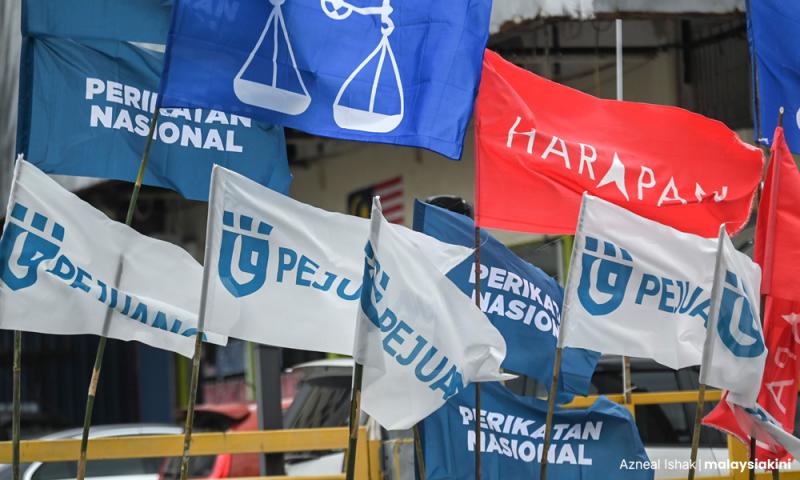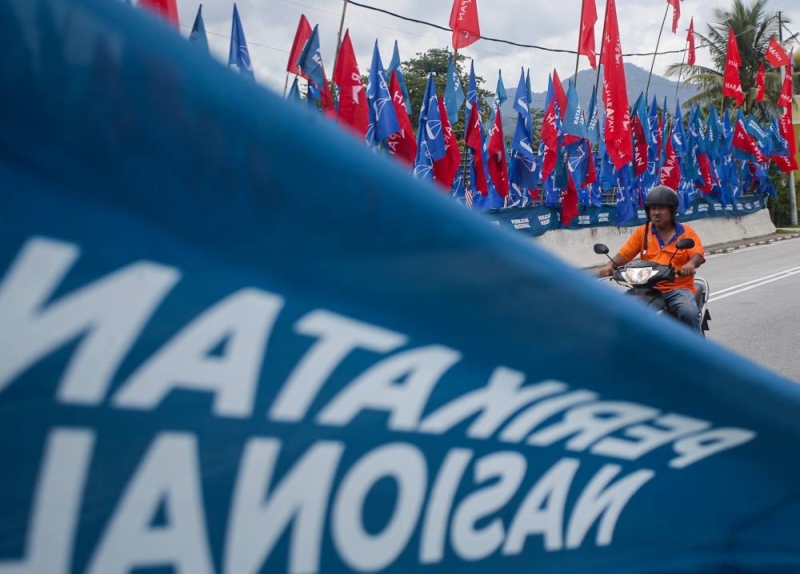
Published by Astro Awani, image by Astro Awani.
Exactly sixty years ago, in October 1962, both the US and the then Soviet Union stood on the brink of a nuclear war. The 13 days of standoff and geopolitical suspense had been dubbed the Cuban Missile Crisis due to the (covert) deployment of Soviet nuclear warheads on the Communist island’s soil (that was later discovered by US military aerial reconnaissance via the high-altitude U2 surveillance aircraft).
The existential nuclear threat never materialised as both sides committed to a definitive resolution on the back of quid pro quo exchanges (i.e., mutual agreement to reciprocally withdraw nuclear missiles on each side – Soviet Union from Cuba and the US from Turkey and Italy).
In September this year, Putin issued a thinly-veiled threat by way of “using all available means” to guard the annexed region of the Donbass (Luhansk and Donetsk) alongside the Zaporizhzhia and Kherson oblasts (provinces) – in what’s an intriguingly replay of the Cuban Missile Crisis. This strongly implies the possible use of nuclear weapons as “deterrence”.
Again, Putin was recorded as saying that “if the territorial integrity of Russia is threatened, Moscow will use any means possible to protect Russia and our people”.
Prior to the peaceful resolution, Khrushchev had been worried about Cuba falling into the hands of the US in light of the Monroe Doctrine (whereby Soviet Union was deemed an outsider interfering in the Americas or Western Hemisphere as the flagship country of the Communist bloc).
The chronology of Russia’s nuclear rhetoric can be traced back prior to its “special operations” campaign to carry out the de-nazification of Ukraine (i.e., rid the neo-Nazi elements who idolised the World War 2/WW2 collaborator Stepan Bandera who’re entrenched in the government and State apparatus – the military, paramilitary and militia).
Indeed, in November 2021, Putin had clearly sounded a warning to the West that “Russia would be forced to act if its red lines on Ukraine were crossed by Nato” (“Putin warns Russia will act if Nato crosses its red lines in Ukraine”, Reuters, December 1, 2021).
After several high-level meetings (the so-called “Normandy Format”) failed to accommodate Russia’s concerns, plans were afoot to de-nazify Ukraine. Rumours of possible military measures, including the deployment of nuclear weapons by Russia, circulated even before the incursion broke out.
Since Russia’s special military operation in Ukraine started in late February 2022, many political elites and analysts in the West have come to believe that the world is on the brink of nuclear war as we are entering a new era of great power rivalry.
Furthermore, the “eroding” of arms control treaties such as the Intermediate-Range Nuclear Forces (INF) Treaty, which the US abandoned in 2018, and the uncertain future of New Start (Strategic Arms Reduction Treaty) serve as a chilling reminder that “strategic stability” (i.e., geo-strategic balance that reduces the risk of nuclear conflict) is now fading as nuclear escalation increases.
The first nuclear threat statement ever recorded was a month before the “pre-emptive” invasion, when former President and Prime Minister Dmitry Medvedev (Deputy Chairman of the Russian Security Council since 2020) said that “we have the right to use our country’s strategic nuclear force … in response to any other threat to our country’s existence” (see, “Medvedev sees no need to review Russia’s nuclear doctrine”, Tass News, January 27, 2022).
Now, what exactly did Putin mean by “territorial integrity” or how do we interpret Medvedev’s statement regarding the perceived threat to Russia’s existence? Does Russia even want a nuclear war, for that matter?
To answer this question, we need to briefly understand the core elements in Russia’s foreign policy orientation.
It should be noted that Russia’s foreign policy is influenced greatly by two main factors – geography and history and the inter-twining/inter-locking of both.
In the Foreign Policy Concept/Kontseptsiya Vneshney Politiki (2008), Medvedev outlined Russia’s top foreign policy priorities which became known as the five principles. These are the primacy of the rules of international law, a multipolar world order, non-aggression and a non-isolationist stance, the protection of diasporas, and the acknowledgment of special interests for Russia and its “near neighbours”.
When we decipher Russia’s geo-strategic psyche, it’s not very surprising to understand why the Eurasian superpower views the West as hostile. Most of the invasions throughout Russia’s history have occurred on the western side of the border.
The West frequently “forgets” that the historic memory of the Great Patriotic War (when the Third Reich launched Operation Barbarossa) continues to haunt many Russians until this day. Nazi expansionism (Lebensraum) in the “East” resulted in the deaths of millions of Soviet citizens (the highest in Europe during WW2).
It seems very clear that what Russia wants is “security assurance” or, to put it simply, a guarantee that no foreign power will challenge its geostrategic interests in the region, i.e., sphere of influence (similar to the Monroe Doctrine).
Hence, Nato expansionism into Russia’s (traditional) sphere of influence such as its military presence in all three Baltic states (Estonia, Latvia and Lithuania) and the hitherto hope of prospective membership vis-à-vis Ukraine are extremely provocative acts that can only force Putin’s hand.
The “ultimate” goal is to damage Putin’s credibility and diminish Russia’s international standing in the world.
In other words, Russia was “forced” to attack Ukraine in order to remove the neo-Nazis/fascists (disciples of Bandera) perceived by Moscow as an existential threat (analogous to the 1989 Operation Just Cause wherein the former Panamanian strongman/dictator and narcotics kingpin Manuel Noriega had to be deposed by the US).
Robert Wade (Professor of Global Political Economy at London School of Economics/LSE) stated in his writing that “the Kremlin has effectively fallen into a trap laid by the US and Nato that’s intended to bring down Putin’s regime” (see, “Why the US and Nato have long wanted Russia to attack Ukraine”, LSE, March 30, 2022).
The rhetoric of nuclear war ratcheted up when Ukrainian President Volodymyr Zelensky made a fervently emotional appeal on 6 October 2022 to NATO to pre-emptively strike at Russia.
At the same time, all the while, the US has repeatedly accused Russia of being cynical in using “nuclear brinkmanship” to force Ukraine to accept its terms.
Notwithstanding, Zelensky’s spokesperson Serhii Nykyforov later clarified that the President’s remark on preemptive strike was referring to precautionary action (see, “Zelensky reference to “preemptive strikes” forces staff to clarify statement”, Kyiv Post, October 7, 2022).
However, as has been made clear by Putin, Russia has no intention whatsoever to occupy Ukraine – but only to remove the neo-Nazi elements there that are determined to carry out their extreme anti-Russian sentiment to violent ends – completely disregarding the fact that nearly half of the country (mainly eastern part) is Russian-speaking.
Although Ukraine is an independent and sovereign state, the country has always been part and parcel of Russia’s sphere of influence – not only in terms of geographical proximity (in the form of contiguous borders) but also historical, religious, cultural and linguistic ties (analogous to Malaysia and Singapore).
Furthermore, in the real world (at least according to the realist or realpolitik understanding in international relations/IR theory), it’s too idealistic to think that all states are purely “equal” in the global system without considering the strategic costs of the distribution and configuration of power that exists among them.
This is precisely why Moscow appears to be utilising its nuclear brinkmanship to prevent Nato and other countries from directly entering the conflict in Ukraine.
Nevertheless, considering the current situation, with neither side showing signs of backing down in principle, the possibility of a nuclear war would appear more real than it has been for decades.
The recent Nato nuclear strike exercise codenamed Steadfast Noon involving 60 aircraft of various types from 14 countries and Russia’s Grom strategic nuclear exercise – both taking place in October – were very concerning if something goes wrong set against the backdrop of the on-going nuclear rhetoric hype.
As there’s no absolute guarantee that major powers wouldn’t cross the line, we might well be on the verge of a dangerous escalation which will expose the world to the grave danger of nuclear catastrophe.
Let’s presume in a pessimistic hypothetical way that nuclear war does break out.
Its scale will fundamentally alter the dynamics of geostrategy and global security, and create a new strategic environment with effects that are “unimaginable”.
If this were to happen, there’s no doubt that a nuclear holocaust would then result in a nuclear winter (permanent or prolonged environmental disaster resulting from the drastic change in the climactic ecosystem – the opposite of global warming, i.e., global cooling).
Widespread firestorms from that nuclear Armageddon could eject up to 165 million tons (150 million metric tons) of soot into the Earth’s atmosphere leading to crop failure. In turn, this would result in a reduction of the global food production by as high as 90%.
Preceding this would be the wiping out of some 63% of the world’s population mainly due to famine. All of this according to projections by Live Science (“‘Nuclear winter’ from a US-Russia conflict would wipe out 63% of the world’s population”, August 19, 2022), for example.
Not only would there be widespread mass famine attributed to the cool, dark, and dry temperatures on the Earth’s surface, agriculture would be scarred and impeded for many decades (see, Nuclear Winter, Alan Robock, 2010)
The catastrophe from a potential nuclear winter will severely change geo-politics and geo-economy forever in a degree that has never been seen before since the period of the Ice Age that saw a drastic decline in the global temperature.
That said, let’s hope that both Russia and Ukraine can resolve by “side-stepping” the pathway to such a scenario and come back to the negotiating table to hammer out a workable resolution, at least, with the view of a permanent/durable ceasefire based on a perceived strategic stalemate.
Otherwise, one day we all might wake up to a completely different world, or perhaps not waking up would be better, after all.
Jason Loh and Hazriq Iqmal Abdul Aziz are part of the research team of EMIR Research, an independent think tank focused on strategic policy recommendations based on rigorous research.

